
Erin Garcia de Jesús is a staff writer at Science News. She holds a Ph.D. in microbiology from the University of Washington, where she studied virus/host co-evolution. After deciding science as a whole was too fascinating to spend a career studying one topic, she went on to earn a master’s in science communication from the University of California, Santa Cruz. Her writing has appeared in Nature News, Science, Eos, Smithsonian Voices and more, and she was the winter 2019 science writing intern at Science News.

Trustworthy journalism comes at a price.
Scientists and journalists share a core belief in questioning, observing and verifying to reach the truth. Science News reports on crucial research and discovery across science disciplines. We need your financial support to make it happen – every contribution makes a difference.
All Stories by Erin Garcia de Jesús
-
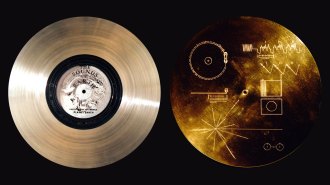 Space
Space50 years ago, Earth’s chances of contacting E.T. looked slim
In 1973, a researcher calculated that it could take millions of years to contact aliens. But that hasn’t stopped scientists from trying.
-
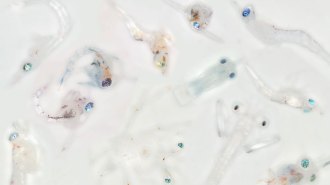 Animals
AnimalsGlassy eyes may help young crustaceans hide from predators in plain sight
Nanospheres in the eye reflect light that matches the color of the surrounding water, possibly making the animals invisible to nearby predators.
-
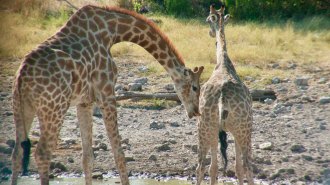 Animals
AnimalsWhy male giraffes drink potential mates’ pee
In giraffes, an organ that detects pheromones has a stronger connection to the mouth than the nose. That’s different from many other mammals.
-
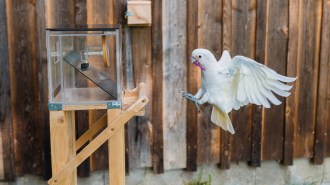 Animals
AnimalsCockatoos can tell when they need more than one tool to swipe a snack
Cockatoos know when it will take a stick and a straw to nab a nut in a puzzle box. The birds join chimps as the only known nonhumans to use a tool kit.
-
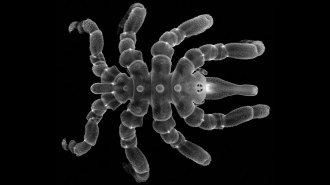 Animals
AnimalsSome young sea spiders can regrow their rear ends
Juvenile sea spiders can regenerate nearly all of their bottom halves — including muscles and the anus — or make do without them.
-
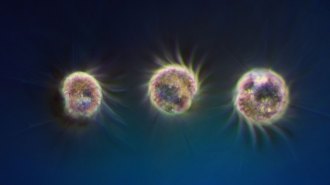 Microbes
MicrobesScientists have found the first known microbes that can eat only viruses
Lab experiments show that Halteria ciliates can chow down solely on viruses. Whether these “virovores” do the same in the wild is unclear.
-
 Health & Medicine
Health & MedicineHere’s what you need to know about COVID’s XBB.1.5 ‘Kraken’ variant
XBB.1.5, an offshoot of the coronavirus’s omicron variant, can hide from parts of the immune system, but vaccines and some treatments still work.
-
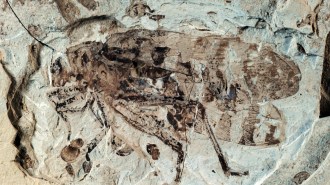 Paleontology
PaleontologyKatydids had the earliest known insect ears 160 million years ago
Fossils from the Jurassic Period show katydid ears looked identical to those of modern katydids and could pick up short-range calls.
-
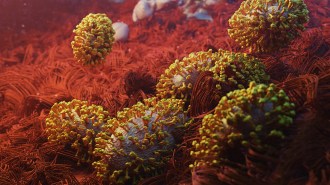 Health & Medicine
Health & MedicineViruses other than the coronavirus made headlines in 2022
Here’s the latest on monkeypox, Ebola, bird flu and other outbreaks that hit this year.
-
 Health & Medicine
Health & Medicine50 years ago, a ‘cure’ for intoxication showed promise
In 1972, vitamin and chemical injections reduced the amount of time that rats fed alcohol spent drunk. The science has yet to pan out for people.
-
 Health & Medicine
Health & MedicineThis child was treated for a rare genetic disease while still in the womb
Babies born with infantile-onset Pompe disease typically have enlarged hearts and weak muscles. But 1-year-old Ayla has a normal heart and walks.
-
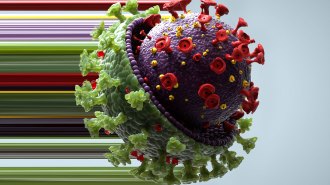 Health & Medicine
Health & MedicineA swarm of sneaky omicron variants could cause a COVID-19 surge this fall
Scientists are tracking similar mutations showing up in many variants that help the coronavirus evade some of our immune defenses and treatments.